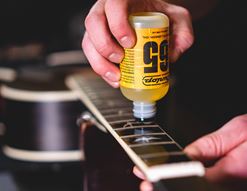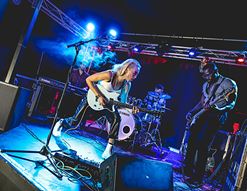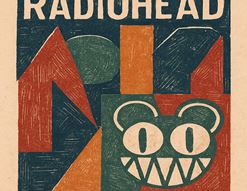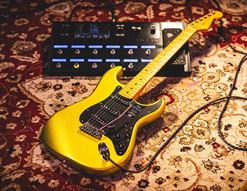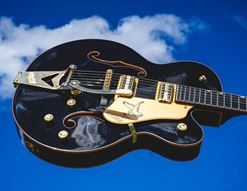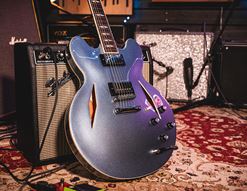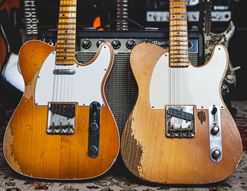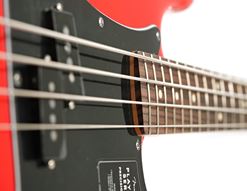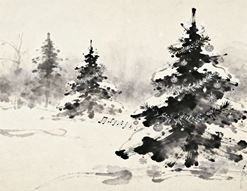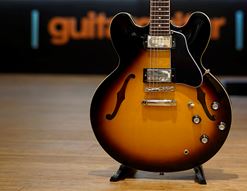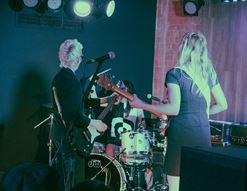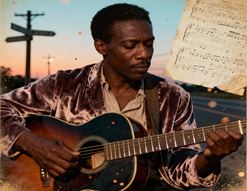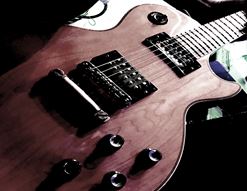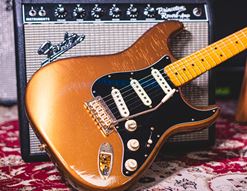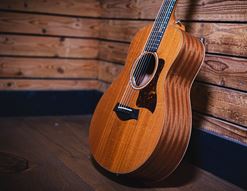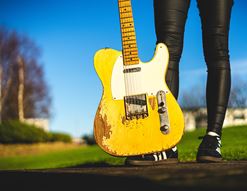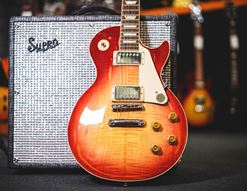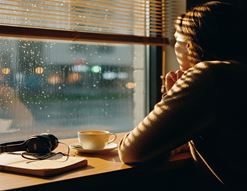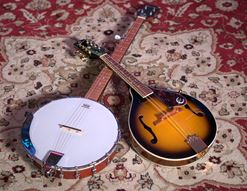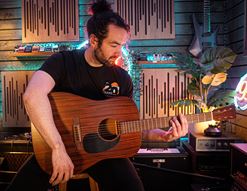What is the MESA/Boogie sound? How do we talk about the sound of an amp?
I think one of the most effective ways is by referring to artists who have used a particular amp, right? Because then, it’s a matter of seeing how the amps are used in a particular context.
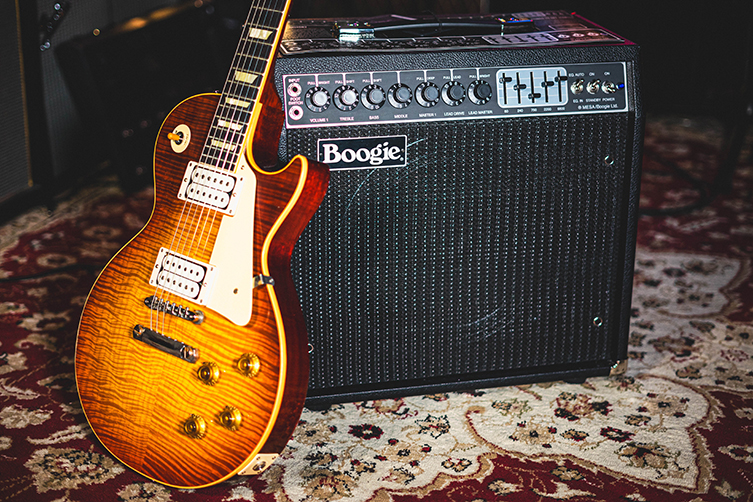
MESA/Boogie are one of the world’s most famous and respected amp makers, having changed the game and innovated continually since the 1970s. Randall Smith’s expertise and insights gained from his years as an amp repairer was the beginning of a revolution that brought us cascading gain, channel switching and onboard graphic EQs.
MESA/Boogie actually offer a wide range of amps that deliver a variety of tones, textures and shades. What one player thinks of as ‘the MESA/Boogie sound’ will likely not be the same as another players’, so I reckon the artist angle is the way to go. I’ll trace an outline of this masterful amp brand based on how people use them, and hopefully that will illustrate the true ‘MESA/Boogie’ sound. Let’s go!
MESA/Boogie Artists at a Glance
Carlos Santana
Mesa fans will know how instrumental Carlos Santana was in putting the fledgling amp brand on the map. Whilst working in a music store, Randall Smith was tasked - for a prank - of altering a 20 watt Fender Princeton amp into a 100 watt amp, which he achieved. Santana was a customer to the shop and agreed to test the amp, after which he responded “Man, that amp really boogies!”
There’s the inspiration for the name! Well, half of it at least. The ‘Mesa Engineering’ part was a name Smith used for his various businesses, which included one that made concrete foundations for buildings and another for rebuilding angines for Mercedes cars!
Anyway, Smith’s experiments with the overloaded Fender amps continued, and these early amps (which made use of additional gain stages to deliver higher gain than ever heard from an amp before) were what started turning heads, particularly when Santana took a custom snakeskin-covered ‘Princeton Boogie’ on stage for a jam with the Rolling Stones. This turned Keef & co into fans too, and the effect just snowballed!
Santana needed lots of smooth sustain, and the cascading gain circuit on Smith's design was tailor-made for the purpose.
Mick Jones
Punk bands are maybe not the first place you’d think to find some MESA/Boogie amps, but ultra-influential legends The Clash were early adopters. Mick Jones loved to put his Les Paul Custom into a Mark II in the early 80s, putting the brand on the map in a context that had never been seen until then. Jones needed a raw crunch with body and clarity, something that MESA amps can easily deliver.
Boutique American amps may not seem ‘punk’ to certain sensibilities, but in practical terms, they sounded awesome and were built like tanks, which must've been appealing when touring with The Clash!
Jones has also been seen playing Lone Star combos, so his love for Boogies is a long one!
James Hetfield
When you think of quality high gain guitar tones, Metallica are the first band that come to mind. How could they not be? Master of Puppets, Sad But True, Battery…when it comes to heavy guitar sounds, Metallica’s are champagne.
The famous 80s ‘Tallica amp is the Mark II C+, which Mesa have only just re-released. The EQ section (particularly the graphic EQ which can be switched on and off) makes this a very ‘sculptable’ amp indeed.
By the time the Black Album came around, Hetfield and Hammett were onto the mighty MESA/Boogie Dual Rectifier heads. As you’ll read in a minute, this Boogie was very much the sound of 90s metal, and remains a touchstone for premium high gain tones.
Chris Cornell & Kim Thayill
As angular as they were rocking, as arty as they were melodic, Seattle’s Soundgarden were a unique and memorable proposition for all rock fans. Becoming more experimental with each record, by the time they came to make their opus Superunknown, they were fully paid up members of the Boogie brigade.
Chris Cornell and Kim Thayill reportedly made use of Mesa’s Maverick head and Rectifier combos such as the Trem-o-Verb. Soundgarden used Mesa amps live right up into their final tours, using Mark III, Electra-Dyne and Dual Rec setups in addition to the Trem-o-Verbs.
John Petrucci
John Petrucci is a modern legend of the guitar, and people pay close attention to every move he makes on the guitar. For decades now, he has been a faithful MESA/Boogie user, and even has his own signature amp, the JP2C. This actually contained a mode for the famous Mark IIC+ model, a favourite of John’s.
From classic crunch to molten metal, Petrucci needs prime tone from all corners of rock, and his Boogies.
Peter Buck
R.E.M.’s Peter Buck isn’t maybe somebody that you’d expect to find on a MESA/Boogie blog, but this underrated and highly influential guitarist more than deserves inclusion.
So, when did Buck ever use a Boogie? Is he not better known for mandolins and Rickenbackers?
Sure, but do you remember the band’s Monster era? When they decided to get scuzzy and play rock songs again, instead of deathly folk? This was the era of songs like What’s the Frequency, Kenneth?, Crush With Eyeliner and Strange Currencies. Such songs have made a comeback recently thanks to TV show The Bear, and crucial to the sound of this album was the thickly saturated, heavily tremolo’ed guitar sound that Buck got out of his then-preferred combo of Gibson Les Paul and MESA/Boogie Trem-o-verb amp (Buck was well known for his Rickenbacker 360 and Vox combo normally).
Yes indeed, those awesome, juddering tones are dialled straight from the amp, and still sound great to this day.
Head & Munky
Korn changed the sound of rock in 1994 with their duvet album Korn. Utilising Ibanez Universe 7 string guitars (which NOBODY at the time was using), their slowed down tempos and brutal rhino-sized riffs caused the entire post-grunge musical landscape to change its face for years. They started a trend that became a revolution in heavy music.
As you may have guessed, they did this with the help of MESA/Boogie amps! Though they chose Dual Rectifier stacks, they actually often ran them clean and used old fuzz pedals for their monstrous gain.
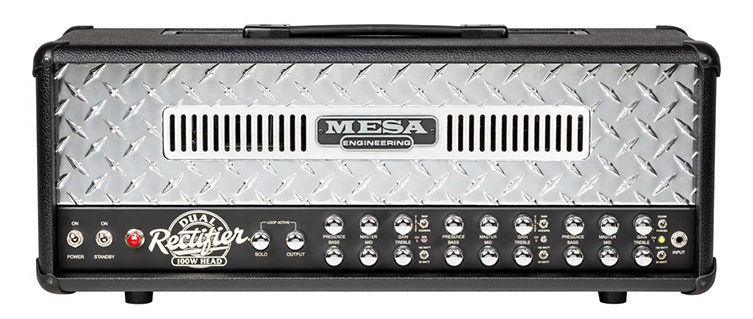
On top of their massive, deep riffs, Korn were (indeed are) experts at creating tense, uneasy and off-kilter atmospherics with their heavily effected guitars. I actually feel that Korn’s guitarists - Brian ‘Head’ Welch and James ‘Munky’ Shaffer - are somewhat underrated and undercelebrated in the grand spectrum of things. After all, they literally redefined heavy guitar playing for a huge part of the nineties, and their use of 7 strings - far from being a fad - brought that instrument into the heavy mainstream where it remains. Their Ibanez and Boogie-created sound is the stuff of heavy metal legends, and they deserve their place in the pantheon.
Wes Borland
You could say that it’s a bit much including both Korn and Limp Bizkit here, but in truth, they have very different sounds. Whilst both are ostensibly ‘Nu Metal’ bands - with Korn inventing the genre and Limp Bizkit defining it - there’s actually not too much to compare the bands sonically.
Wes Borland is admired for being something of a sonic wizard, employing not only unusual effects and textures but even going as far as commissioning custom 4 string guitars to serve his creative needs. His 7 string guitar use (thanks to his friendship with the Korn guys) proved short-lived as he preferred ultimately to play a 6 string guitar (nowadays mostly Jackson) tuned to C sharp instead.
His enormous gain sound was the result of plugging into a pair of Dual Rectifier heads, while he opted for a Roland Jazz Chorus combo for his cleans.
Andy Timmons
As tasteful as he is technical, and as melodic as he is unorthodox, Andy Timmons is a real player’s player. From his Danger Danger days to his lengthy career as a solo artist, sideman and session extraordinaire, Timmons has the kind of tone and touch that makes him the envy of all guitarists.
He’s the creator of what he calls the ‘Halo’ sound, a deliciously expressive lead tone that uses reverb and multiple ambient delays to produce a subtle but permeating aura around his notes, with the ambience being fed by subsequent notes. It’s a wonderful sound, and alongside his pedals, he uses a signature Ibanez guitar and a number of MESA amps, primarily the Lonestar.
Mark Tremonti
In the late 90s, Creed were bigger than the Beatles (maybe) and Mark Tremonti had flat-out the best guitar tone in rock. Huge sounding, tons of low end but more than enough sizzle to cut through, his sound was as much felt as it was heard.
His combination of a MESA Dual Rec and cab along with a bass cab was an inspired touch, and meant that he could be a dominating force within a one-guitarist band. Nowadays, Mark’s association with PRS have seen him develop his own amplifier range with them, but for all of those classic Creed tones, it’s Boogie all the way!
Future Boogie Stars
Those were some of the high-profile artists whose tones and playing have put MESA/Boogie on the map for musicians across the world. Despite a predilection for chunky heaviness, it’s obvious that the brand can do anything, and in the right players’ hands, they can make history.
Now, after a few years of restructuring and re-imagining, Boogie are back! Who is going to be the next generation to define the MESA/Boogie sound?
Click to Browse our Range of MESA/Boogie Amplifiers

